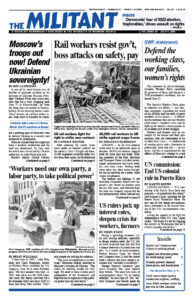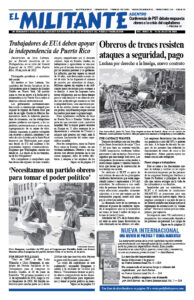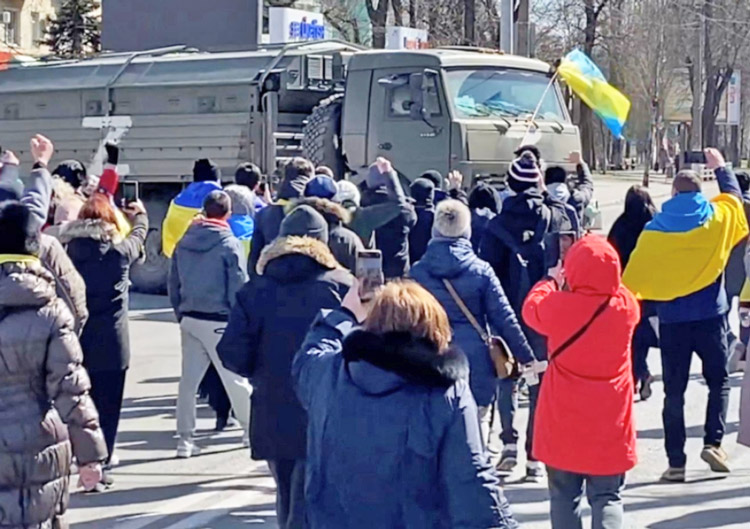Kherson, a Ukrainian port on the Black Sea, was the first major city to fall to Russian forces when they invaded Ukraine Feb. 24. It lies near the Crimean Peninsula, which was seized by Moscow in 2014.
“In the first days of the occupation in March, Russian troops faced fierce resistance in Kherson,” Kyiv reporter Olena Mukhina, wrote in Euromaidan Press. But Moscow’s forces dispersed protesters with rubber bullets and stun grenades. Some 250 civilian leaders were “disappeared” and 70 have since been released, often after being tortured.
Half the population left Kherson in the first three months of the war.
Eventually public protests, like that above, dwindled, said Mukhina, “but the resistance didn’t vanish — it went underground.”
Russian flags continue to be replaced by Ukrainian flags in the night. Leaflets saying “Kherson, 10 km to freedom” appeared, warning Russian soldiers that the counteroffensive by Ukrainian forces keeps getting closer to the city.
The occupying forces have shut down Ukrainian TV and radio, imposed Russian banking and closed Ukrainian phone services. Despite this “Russification,” Moscow’s puppet administration faces serious difficulties. It announced June 7 it would hold a referendum on whether the city should join the Russian Federation, but has never set a date.
When Ihor Kolykhaev, the mayor, refused to cooperate with the occupiers, he was replaced by an official loyal to Moscow. But Kolykhaev set up shop in a public building and has continued running city services.


